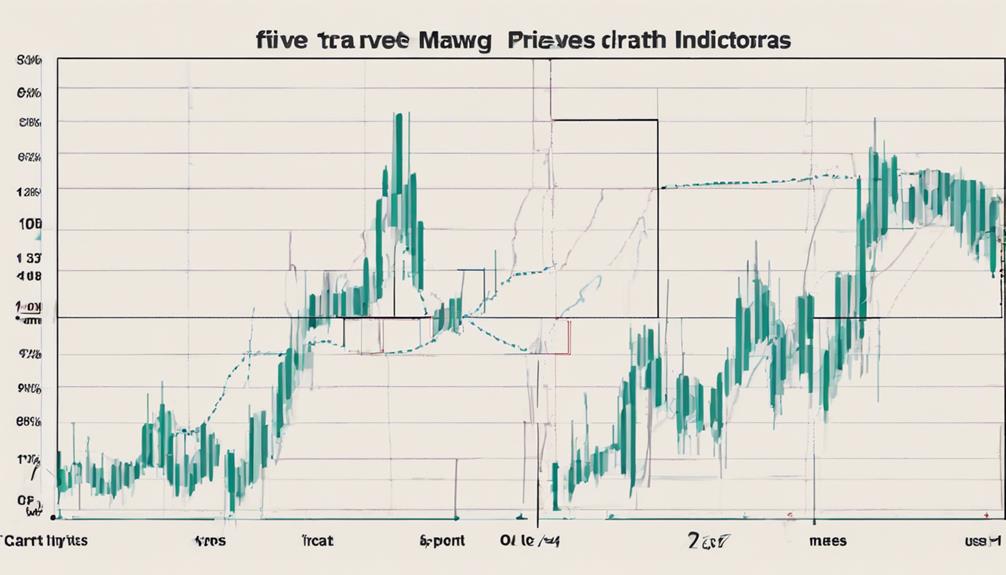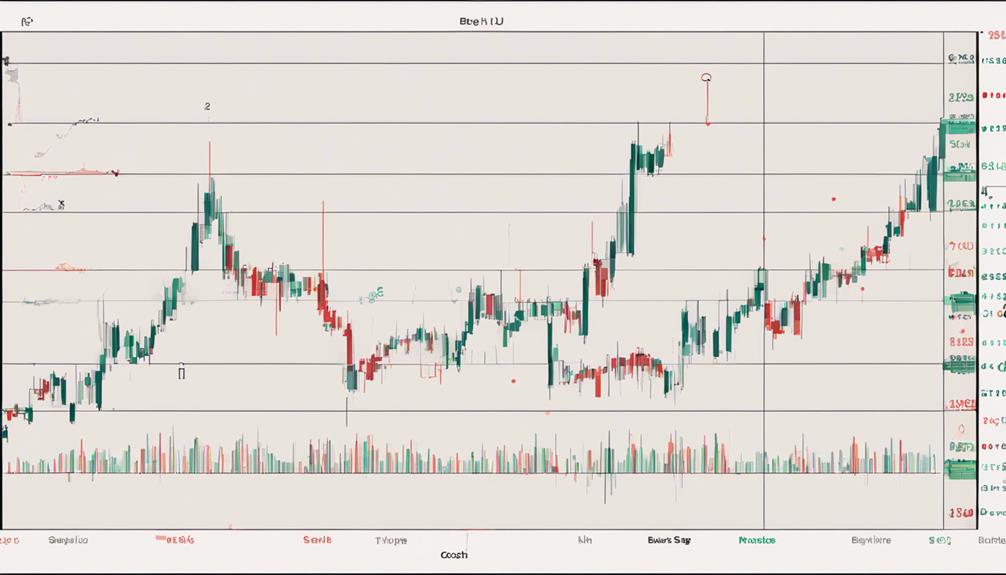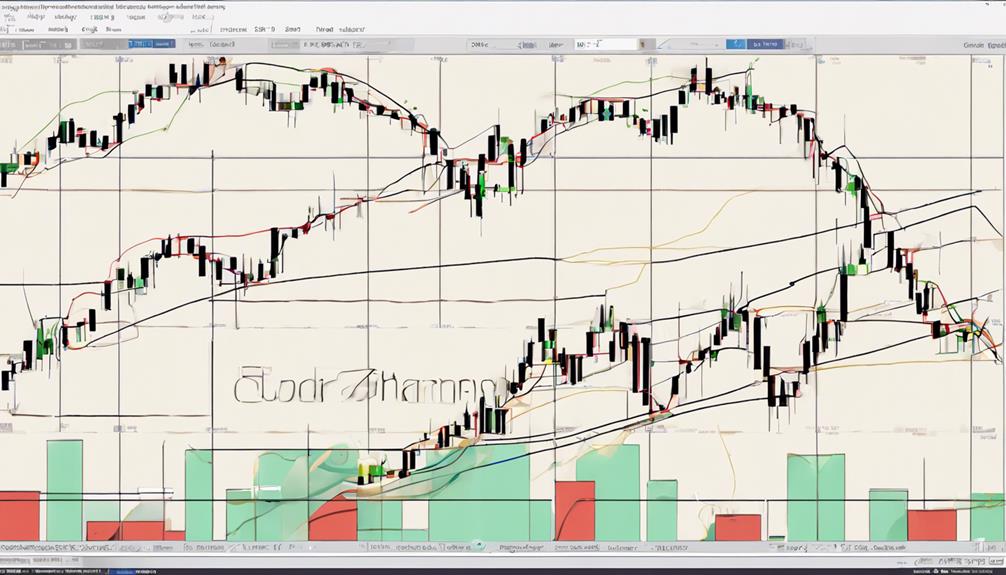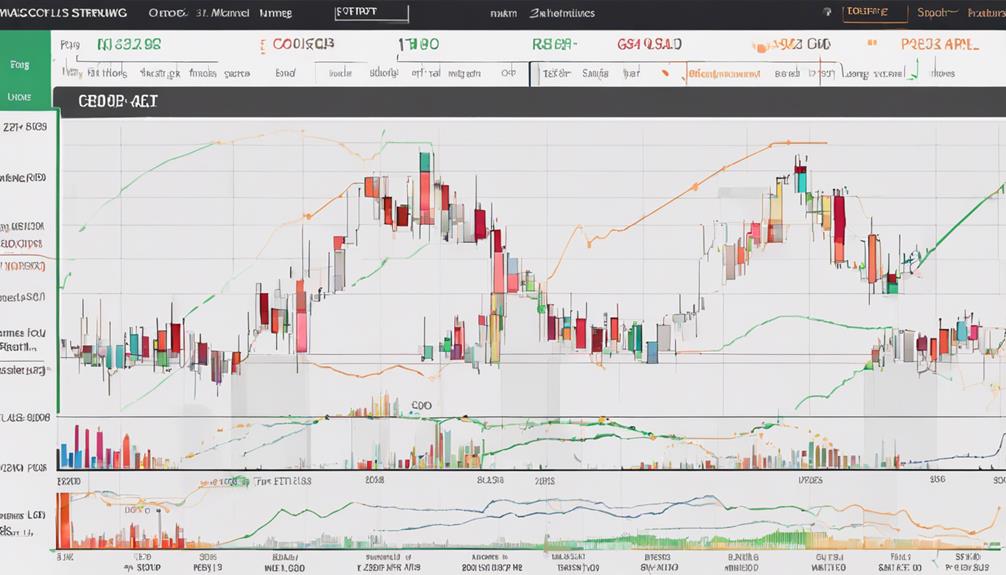If you're navigating the vast ocean of financial markets, think of trend-following indicators as your reliable lighthouse, guiding your trading decisions through the turbulent waters of price movements.
These five key principles offer you a roadmap to understanding market trends and honing your strategies for success.
By mastering these fundamental principles, you'll be equipped with the essential tools needed to stay afloat and potentially steer your way towards profitable outcomes.
Identifying Market Trends
To effectively implement trend-following strategies, you must first master the skill of identifying market trends through analyzing price movements over time. Market trends are crucial for successful trading as they provide insight into the direction and strength of a market.
By observing price movements, traders can determine whether the market is in an uptrend, downtrend, or moving sideways. Uptrends are characterized by higher highs and higher lows, indicating a bullish market sentiment, while downtrends show lower lows and lower highs, signaling a bearish sentiment. Sideways trends, on the other hand, exhibit minimal price movement and lack clear trend direction, making it challenging for trend-following strategies.
Understanding these trends is fundamental for entering trades in alignment with the prevailing market direction for optimal trading outcomes.
Using Moving Averages Effectively

Utilizing moving averages with precision is essential for effectively capturing market trends and making informed trading decisions. When using moving averages, consider the following:
- Experiment with different types of moving averages, such as Simple Moving Average (SMA) and Exponential Moving Average (EMA), to find the one that suits your trading style.
- Combine multiple EMAs to improve trend analysis accuracy and generate reliable signals for entry and exit points.
- Incorporate the Moving Average Convergence Divergence (MACD) indicator, which utilizes moving averages to identify potential trend changes and momentum shifts effectively.
Incorporating Momentum Indicators

Incorporating momentum indicators into your trading strategy enhances your ability to assess price movements' speed and strength accurately.
Popular momentum indicators like the Relative Strength Index (RSI) and Moving Average Convergence Divergence (MACD) can assist in confirming trends, spotting potential reversal points, and providing buy or sell signals. These indicators, rooted in mathematical calculations of price changes over specific periods, offer valuable insights into market dynamics.
Setting Stop Loss Orders

Implementing stop loss orders is a critical aspect of risk management in trading, providing a safeguard against potential losses by automatically triggering the sale of a security at a predetermined price level. When setting stop loss orders, traders should consider the following:
- Utilize technical analysis, volatility levels, or support and resistance levels to determine the exit price.
- Consider percentage-based calculations to set effective stop loss levels.
- Place stop loss orders strategically to protect against adverse price movements and market fluctuations.
Properly setting stop loss orders is essential for effective risk management, helping traders protect profits and maintain discipline in their trading strategies.
Implementing Proper Risk Management

Proper risk management in trend following requires meticulous attention to setting stop-loss orders to mitigate potential losses effectively. Position sizing plays a critical role in managing risk by ensuring that the risk taken on each trade is proportionate to the overall account size.
Traders can evaluate the robustness of their risk management strategies through backtesting and optimization using historical data. By implementing sound risk management techniques, traders can navigate through volatile market conditions and avoid substantial drawdowns.
Capital preservation and managing risk exposure are fundamental for achieving long-term success in trend following strategies. Embracing these principles fosters a disciplined approach that's essential for sustaining profitability and weathering the inherent uncertainties of financial markets.
Can You Explain the Key Principles of Trend Following Indicators in More Detail?
When it comes to grasping trend following indicators, understanding the key principles is crucial. These indicators are based on the idea that markets tend to move in trends and aim to identify these trends early on to capitalize on potential price movements. They can include moving averages, the MACD, and the ADX.
Frequently Asked Questions
What Are the Principles of Trend?
To understand trends, observe price movements for uptrends, downtrends, or sideways patterns. Utilize trend-following indicators for entry and exit cues. Maximize profits by following market momentum. Recognize trend reversals for timely exits. Stay focused amidst market noise.
What Are the Basics of Trend Following?
You track market momentum like a seasoned pro. Focus on riding trends, not predicting. Avoid losses smartly. Spot uptrends, downtrends, and sideways moves. Use indicators for trade signals based on current trends.
What Are the Indicators for Determining Trend?
To determine trend, consider indicators like Moving Averages (SMA, EMA) for direction, Bollinger Bands for volatility, MACD for crossovers, RSI for price momentum, and On Balance Volume for volume confirmation. Apply these tools for informed trend analysis.
What Is the Indicator of a Trend?
You know what the indicator of a trend is? It's like following breadcrumbs in the market. Spot those moving averages, MACD crossovers, or RSI levels. They'll lead you through the trend maze.
Conclusion
You've navigated the turbulent waters of market trends with finesse, using the compass of moving averages, the wind of momentum indicators, and the anchor of stop loss orders.
Embrace the uncertainty of the financial seas, knowing that proper risk management is your sturdy vessel.
Sail forth with confidence, armed with the knowledge and tools to conquer the ever-changing tides of the financial markets.
